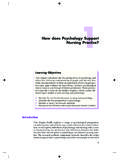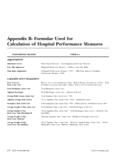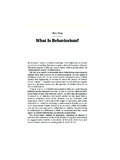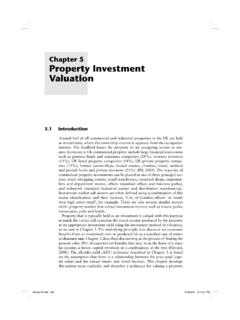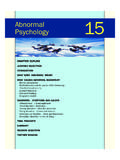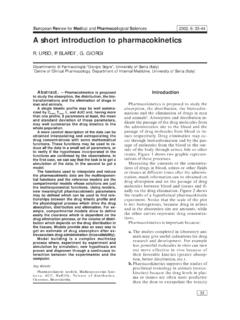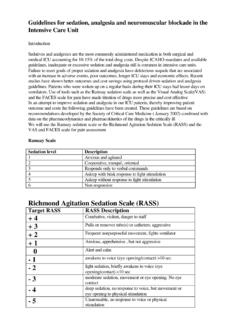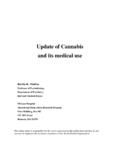Transcription of 1: CLINICAL PHARMACOKINETICS - Wiley-Blackwell
1 1 : CLI N I C A L P H A R M AC O KI N E TI C S 1. General overview: CLINICAL PHARMACOKINETICS , 2. PHARMACOKINETICS , 4. Drug clearance (CL), 6. Volume of distribution (Vd), 8. The half-life (t ), 10. Oral availability (F), 12. Protein binding (PB), 14. pH and PHARMACOKINETICS , 16. 1. CLINICAL PHARMACOKINETICS General overview General overview: CLINICAL PHARMACOKINETICS 1. The ultimate aim of drug therapy is to achieve ef cacy without toxicity. This involves achieving a plasma concentration (Cp) within the therapeutic window', above the min- imal effective concentration (MEC), but below the minimal toxic concentration (MTC). CLINICAL PHARMACOKINETICS is about all the factors that determine variability in the Cp and its time-course. The various factors are dealt with in subsequent chapters.
2 Ideal therapeutics: efficacy without toxicity Minimum Toxic Concentration (MTC). Drug concentration Ideal dosing Minimum Effective Concentration (MEC). Time The graph shows a continuous IV infusion at steady state, where the dose-rate is exactly appropriate for the patient's clearance (CL). Inappropriate dosing Dosing too high in relation to the patient's CL toxicity likely Minimum Toxic Concentration (MTC). Drug concentration Minimum Effective Concentration (MEC). Dosing too low in relation to the patient's CL drug may be ineffective Time Some reasons for variation in CL. Low CL High CL. Normal variation Normal variation Renal impairment Increased renal blood ow Genetic poor metabolism Genetic hypermetabolism Liver impairment Enzyme induction Enzyme inhibition Old age/neonate 2.
3 General overview CLINICAL PHARMACOKINETICS pharmacokinetic factors determining ideal therapeutics If immediate effect is needed, a loading dose (LD) must be given to achieve a desired 1. concentration. The LD is determined by the volume of distribution (Vd). To maintain the concentration requires a maintenance dose regimen. The maintenance dose-rate is determined by the CL. The uctuations within a dosing interval are determined by the half-life (t ). Drug concentration Minimum Toxic Concentration (MTC). LD (IV) followed by maintenance dosing Cpss as continuous infusion Minimum Effective Concentration (MEC). Time Drug concentration Minimum Toxic Concentration (MTC). LD (oral) followed by oral maintenance dosing Minimum Effective Concentration (MEC). Time Drug concentration Minimum Toxic Concentration (MTC).
4 Cpss If dosing is started by continuous infusion of the maintenance dose, it takes Minimum Effective Concentration (MEC). four half-lives to approach steady state 1 2 3 4 5 6. Half-lives Drug concentration Minimum Toxic Concentration (MTC). Similarly, if dosing is started with oral maintenance dosing, it takes four half- lives to approach steady state Minimum Effective Concentration (MEC). Time 3. CLINICAL PHARMACOKINETICS PHARMACOKINETICS PHARMACOKINETICS 1. The study of the movement of drugs into, within, and out of the body, and factors affecting this or, more simply What the body does to the drug PHARMACOKINETICS should not be confused with pharmacodynamics. Pharmacodynamics is the study of drug effect, what the drug does to the body (see p. 60). Knowledge of pharma- cokinetics enables drugs to be used rationally and doses tailored to the individual patient.
5 The most important pharmacokinetic parameters from a dosing point of view are: The clearance (CL) determines the maintenance dose-rate The volume of distribution (Vd) determines the loading dose (LD). The half-life (t ) determines the time to steady state and the dosing interval One-compartment model In this simple model the body is considered as a single container (one compartment) in which the drug is instantaneously and uniformly distributed. Input (dose) Drug in body Output (elimination). PHARMACOKINETICS describes the movement of the drug into, within, and out of the compart- ment (the body), and the time-course of this. From a drug effect point of view it is the con- centration of drug at the site of action (the biophase) that is important. This is dif cult to measure.
6 Under steady-state conditions the Cp is in equilibrium with concentrations at sites of action. In practice it is usually the Cp that is measured. Cp Cbiophase Receptors Site of action (biophase). The PHARMACOKINETICS of a drug are usually studied using an IV injection or infusion, as the dose can then be considered to be 100% assimilated into the body. The values of CL, Vd and t for a drug are derived from the curve of concentration versus time. 4. PHARMACOKINETICS CLINICAL PHARMACOKINETICS Concentration versus time curves 1. Zero-order elimination It would be very simple if the Cp declined linearly with time. This situation, called zero- order elimination, does occur but only rarely. A familiar example is ethanol, concentrations of which decline at a constant rate of approximately 15 mg/100 mL/h.
7 Drug concentration Rate of elimination constant with time Note: linear y-axis Time First-order elimination The more common situation is first-order elimination, in which the decline in Cp is not constant with time, but varies with the concentration, rate of elimination Cp. The term rst order' re ects the fact that the rate of elimination is dependent on concentration (Cp to power of 1, or Cp1, which is the same as Cp). Cpt is the concentration at any time t Drug concentration Cp0 is the concentration at time 0. k is the elimination rate constant Cpt = Cp0 e kt The concentrations declines exponentially'. with time. Note: linear y-axis Time Cp0. Drug concentration (ln). This is the same curve as the one above but the y-axis is the natural logarithm ln Cpt = Cp0 kt of Cp(In).
8 This enables the slope of the k curve' to be estimated, which in turn Cp0. allows the calculation of t and Vd Note: log y-axis t . Time 5. CLINICAL PHARMACOKINETICS Drug clearance (CL). Drug clearance (CL). 1. CL is the single most important pharmacokinetic parameter. It is: The volume of plasma cleared of drug per unit time'. or A constant relating the rate of elimination to the Cp', rate of elimination CL Cp CL is an index of how well a drug is removed irreversibly from the circulation. As a result it determines the dose-rate (dose per unit time) required to maintain a Cp. CL only applies to drugs with rst-order (exponential) kinetics, the majority of drugs. Rate of elimination Cp Drug concentration .. Rate of elimination a constant Cp Cpt = Cp0. Rate of elimination CL Cp or Rate of elimination (mg/h).
9 CL(L/h) . Cp (mg/L). Time Thus, CL is a constant relating the rate of elimination to the Cp', and the volume of plasma cleared of drug per unit time'. The units are vol/time ( L/h). Maintaining a constant steady-state concentration (Cpss). To maintain a target steady state Cp, the drug must be administered at a rate equal to the rate of elimination at that concentration: Steady-state concentration Rate of administration rate of Drug concentration Administration elimination Since rate of elimination CL Cp Then rate of administration CL Cpss Elimination or Maintenance dose-rate CL Cpss 1 2 3 4 5 6. Half-lives 6. Drug clearance (CL) CLINICAL PHARMACOKINETICS Physiological relevance of drug CL. The main organs responsible for drug CL are the liver (metabolism) and the kidneys 1.
10 (removal of unchanged drug). Total body CL is the sum of all CL processes, CL (total) CL (renal) CL (liver) CL (other). Comparison of drug CL values with glomerular ltration rate (GFR), renal blood ow or liver blood ow may give a clue to mechanisms of drug removal, a drug eliminated entirely by glomerular ltration will have a maximum CL of 120 mL/min ( GFR). If there is tubular secretion the drug CL may be 120 mL/min, and if there is tubular reabsorption, it may be 120 mL/min. Similarly the maximum CL from blood by metabolism is equal to the liver blood ow ( 1500 mL/min). Determination of CL. From the Area Under the Curve (AUC). Plasma CL is usually determined from the area under the Cp versus time curve (AUC). after IV administration. The AUC is determined using the trapezoidal rule'.




